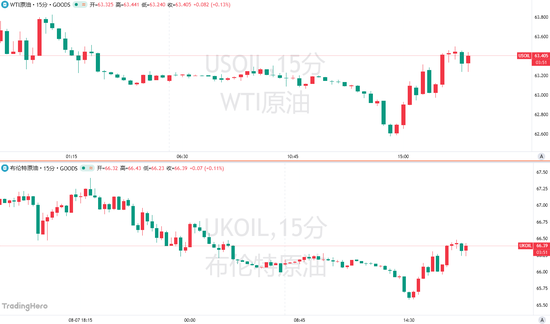Trump’s “Ultimatum” Deadline Arrives! Will Oil Prices Plunge or Skyrocket?
After a series of declines, oil prices have stabilized as traders await the next steps by U.S. President Trump to halt the Russia-Ukraine conflict, following his imposition of tariff penalties on India for purchasing Russian oil.
Brent crude prices steadied near $66 per barrel after six consecutive days of losses—the longest losing streak since May. Trump had set a Friday deadline for Moscow to agree to a ceasefire, stating his willingness to meet with Putin even if the Russian leader has not yet agreed to sit down with Ukrainian President Zelensky.
Earlier this week, Trump doubled tariffs on all Indian imports to 50% as punishment for the country’s purchase of Russian crude, prompting state-owned Indian refiners to reduce purchases and seek alternative sources.
After three months of gains, oil prices fell sharply in August. Investors are preparing for a potential supply surplus later this year as OPEC+ proceeds with easing production restrictions.
Meanwhile, signs of slowing growth in the world’s largest economy, partly due to the broader impact of Trump’s trade tariffs on economic activity, have also weighed on crude futures, posing risks to energy demand.
“Geopolitics remains the primary driver,” said an analyst. “The market does not expect a significant tightening in oil supply and demand, as higher prices would run counter to U.S. interests. As a result, oil has struggled to gain upward momentum recently.”
In recent years, whether due to conflicts, geopolitical risks, or administrative hurdles like sanctions and tariffs, oil traders, producers, and consumers have proven adept at navigating supply challenges.
Brent crude’s prompt spread—the difference between its two nearest contracts—indicates that near-term conditions have eased. This closely watched indicator has narrowed to a backwardation of 58 cents per barrel, compared with over $1 a month ago.
Risk Warning and Disclaimer: The market carries risks, and investment requires caution. This article does not constitute personal investment advice and does not account for individual users’ specific investment objectives, financial situations, or needs. Users should consider whether any opinions, views, or conclusions herein align with their circumstances. Investments made accordingly are at the investor’s own responsibility.
May
Alternatively, if you meant something else (e.g., a cultural event or a different location), please provide more details so I can give an accurate summary!



